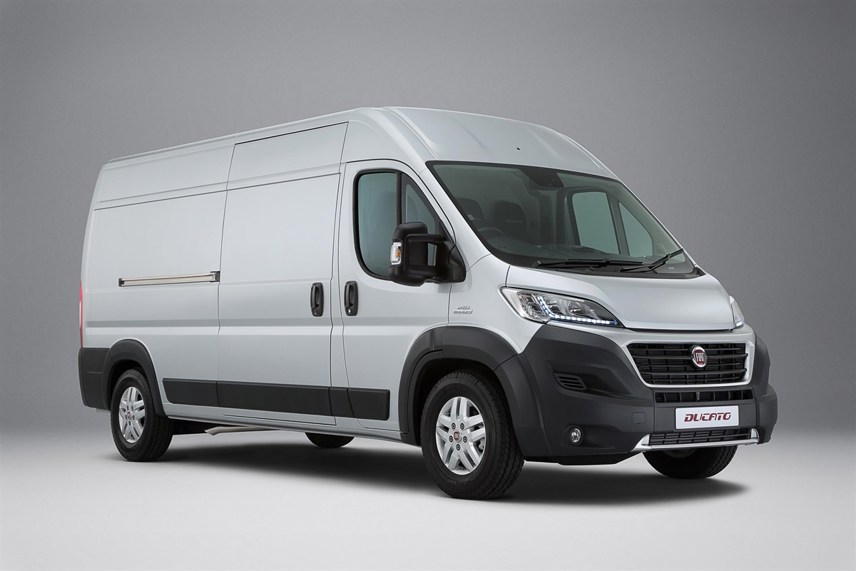Review
As part of the co-developed triplets with the Peugeot Boxer and Citroën Relay, Fiat’s Ducato has been given an overhaul for 2014.
Like the French twins, the most obvious difference is a facelifted front end with redesigned headlights and grille (designed to look like a Spartan helmet, according to Fiat’s designers), while under the skin there are improvements in efficiency and safety.
Fiat claims 10% lower fuel consumption across the range as a whole thanks in part to reduced weight throughout. With the optional start-stop system, certain 2.3-litre derivatives offer an official combined fuel economy of 45.6mpg.
Lighter overall weight also means a slight increase in payload, especially when fitted with the most heavy-duty rear suspension option. That allows up to 2,500kg over the rear axle and a gross vehicle weight of 4,250kg.
Since the basic structure of the van is unchanged from its predecessor, cargo volume remains the same – an excellent 11.5 cubic metres for the 3.5m wheelbase panel van.
As before, there are hundreds of potential configurations for the Ducato (10,000 in all, Fiat claims), but there are three new variants: a longer 4.3m wheelbase model, a seven-seat crew cab and a tipper version.
On the safety front, a new tyre pressure monitor and an updated stability control system are standard. A lane departure warning system, which triggers a loud bleeping noise if the driver strays over a white line without indicating, is optional.
Fiat says the clutch, brakes and front suspension components are capable of covering more ground before needing replacement and the durability of door latches and seals has also been improved. That nose job isn’t just style for style’s sake either – the front bumper is designed to be cheaper to repair than before and it is now easier to access the engine bay, reducing maintenance time.
Inside, there is new upholstery for the seats, extra cupholders and a new radio system, now with Bluetooth and USB connectivity and the option of DAB. There is also the option to upgrade to Fiat’s ‘UConnect’ five-inch multimedia touchscreen, with or without TomTom-derived sat-nav.
Otherwise, the cabin is broadly unchanged. That’s a shame as it is one of the Ducato’s weaker points. The seats are extremely firm and lack side support, the handbrake is a real stretch to release for taller drivers and overall fit and finish is a long way behind the Ford Transit.
The clipboard holder fitted to older Ducatos has been altered to hold digital tablets and smartphones but it is quite a rattly, fragile-feeling item.
The main difference between the Ducato and its Peugeot/Citroën equivalents is under the bonnet. As before, the Ducato gets a choice of two diesel engines to power its front wheels: Fiat’s 2.3-litre Multijet II (available with three power outputs – 110hp, 130hp or 150hp) and the 3.0-litre Multijet unit with 180hp. I tried the 150hp Multijet II and found it smooth and reasonably refined (certainly quieter than the Boxer). It pulls impressively too, even on steep inclines.
A six-speed automated Comfort-Matic transmission is available, and although there’s a delay between gears it is smooth and does make the driver’s life easier. According to Fiat, it also reduces fuel consumption by around 5%.
New face aside, the updates might be slight but they are beneficial, particularly in terms of efficiency and durability. They’re enough to offset the modest price increase of around £350 over the existing Ducato.
















